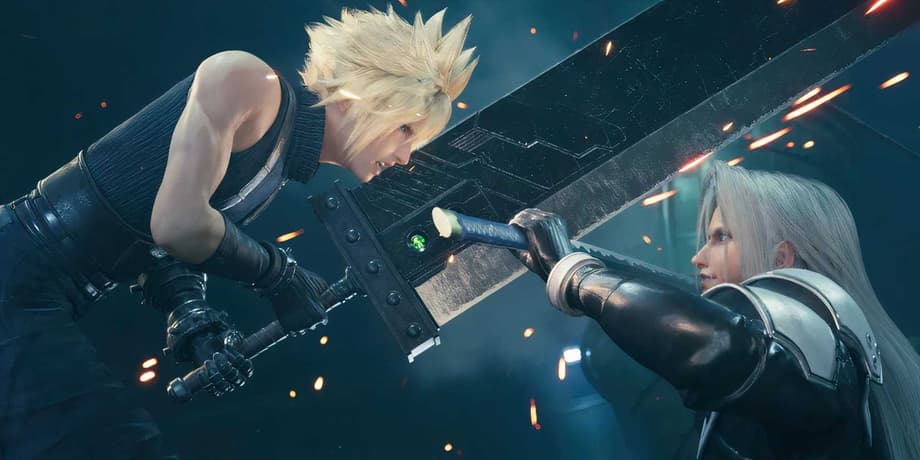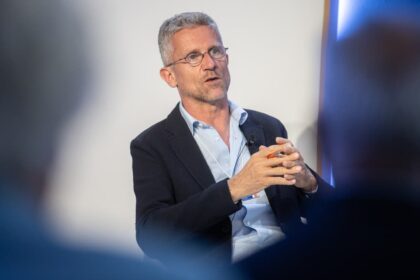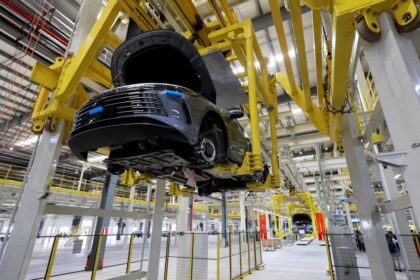A reshaped Square Enix enters a leaner era
Square Enix is cutting staff in the United States and the United Kingdom as it restructures its overseas publishing arm and concentrates more development in Japan. The company says the shake up is designed to strengthen its development structure and create a single, globally integrated marketing strategy. While the publisher has not disclosed exact numbers, employees have been told that roles are being eliminated across Western operations. In the UK, up to 137 jobs are at risk under redundancy consultations, while the number in the US has not been shared.
Management has begun consolidating the HD Games publishing organization from 11 divisions to four. Internal materials point to a slimmer structure with lean, agile and multi skilled teams, a shift from quantity to quality, and a tighter focus on projects with stronger commercial potential. Square Enix expects the plan to produce more than 3 billion yen in yearly cost savings once the new structure is in place.
The move continues a multiyear retrenchment from large scale Western development. Square Enix had already sold Crystal Dynamics, Eidos Montreal and Square Enix Montreal, along with related game series, and had reduced Western headcount in earlier rounds. The present changes go further by reshaping the overseas publishing organization while keeping core development centered in Japan.
Who is affected and how the process works
Staff across many functions are impacted, including publishing, IT, marketing, sales, QA and business planning. People in the company’s indie program in Europe, the external studios development group and brand marketing have been told they are at risk. The company has told employees that those affected will be contacted directly. Some teams that remain will be required to spend more time in the office as the organization tightens day to day coordination across time zones.
UK redundancy consultations
UK employees who received letters that they are at risk now enter a consultation period that typically runs for about one month. During this process, managers and elected representatives review proposals, explore whether any roles can be re scoped or redeployed, and determine the final number of redundancies. The 137 figure reflects the scale of roles at risk in London, not the final number that will leave the business. The outcome can include redeployment to other units or changes to job descriptions that save some positions.
Scope across departments
Internal briefings described a broad reduction across nearly all areas outside Japan. The Square Enix Collective indie initiative in Europe, external studios development and brand marketing were highlighted for cuts, while support teams such as IT, sales and QA are also affected. Western managed franchises remain part of the portfolio. Life Is Strange, Outriders and Just Cause continue to be handled by Western studios, and the company still publishes PowerWash Simulator, even as core development leadership is centralized in Japan.
Why Square Enix is restructuring now
Square Enix is reshaping its business after a stretch of uneven results and cancelled projects. The publisher has said it plans to rebuild its overseas business from the ground up and remove layers that slowed decision making. In earlier financial periods the company absorbed large write offs tied to cancelled titles that no longer fit strategy, roughly 140 million dollars in content abandonment losses at one point. The new plan puts project selection under tighter review and directs resources to fewer games with clearer commercial targets.
The latest earnings update for the six months ended September 30, 2025 showed revenue of 133.895 billion yen, a decline of 15 percent year over year, and net income of 10.05 billion yen, down 14.5 percent. Against that backdrop, leadership is compressing the HD Games publishing organization from 11 divisions to four and aiming for more than 3 billion yen in annual savings. The company also told investors to expect a restructuring expense of 11.8 billion yen to be recorded in the fiscal year ending March 2026 as it rightsizes the overseas organization.
Multiplatform pivot for big releases
A key plank of the medium term plan, called Square Enix Reboots and Awakens, is a move to release major games on multiple platforms. The company says future AAA projects will target Nintendo, PlayStation, Xbox and PC rather than launching for a single console first. Recent Final Fantasy entries launched on PlayStation 5, which limited the initial audience. A broader launch strategy aims to reach more players on day one, stabilize revenue profiles and reduce the risk that comes with exclusive releases.
Consolidation in Japan, tighter global oversight
Development leadership is shifting closer to headquarters in Tokyo. The plan centralizes decision making, cuts down on overlapping functions between regions and trims points of coordination that added cost. Support functions and staffing between Japan and overseas offices are being reviewed for what management calls group wide optimization. The goal is to keep creative output strong while avoiding bloat that can slow production and marketing cycles.
The growing role of AI at Square Enix
Alongside the restructuring, Square Enix plans to automate a large portion of game testing with generative AI. Internal materials say the company wants 70 percent of QA and debugging handled by AI systems by the end of 2027. The effort is being developed with researchers at the University of Tokyo’s Matsuo Laboratory and includes a joint team of engineers and academics. Management frames AI as a way to speed up test cycles, find bugs earlier and free up developers for creative work.
Quality assurance is the discipline that tries to break a game before players do. Testers step through missions, stress online features, verify performance targets and file detailed bug reports. AI can assist by generating test cases at scale, replaying sequences with perfect timing, scanning logs to spot anomalies and running thousands of variations that would be impractical for humans. These systems can also simulate controller input or network conditions to expose bugs that only appear under very specific circumstances.
What AI driven QA looks like in practice
In a typical pipeline, AI tools create regression tests when developers change code, then compare behavior against known good builds. Natural language models can parse crash logs and suggest likely causes, while computer vision can flag missing textures or animation glitches that differ from reference captures. Even with these advances, human testers remain central. Gameplay feel, difficulty tuning, accessibility checks and certification for platform holders require judgment that AI still cannot match.
Questions around ethics and workforce impact
AI in game development raises concerns that go beyond efficiency. Training data, player privacy, and the transparency of automated decisions are active topics across the industry. For workers, a large shift to automation changes the mix of roles, favoring engineers who build and maintain tools and reducing entry level testing positions. Square Enix says the present layoffs stem from a publishing reorganization, not the AI program. The target to automate most QA by 2027 will still influence staffing plans over the next few years.
What this means for flagship franchises
Fans should expect Square Enix to keep shipping new entries in its biggest series while altering how and where those games launch. The multiplatform plan suggests the next wave of AAA releases will arrive on PlayStation, Xbox, Nintendo and PC within the same window rather than in stages. That approach can help live service features, reduce spoilage from staggered release dates and focus marketing on a single global push.
Western managed series remain part of the slate even as development leadership concentrates in Japan. Life Is Strange is still overseen by Western studios, as are Outriders and Just Cause. Square Enix continues to publish PowerWash Simulator. In practice, the reorganization should not change the core identity of these games. It may change how milestones are approved, how budgets are allocated and how cross regional teams build toward a synchronized launch.
Support functions that stay in the West
Even with more development centered in Tokyo, the company still relies on Western teams for vital work. Localization into dozens of languages, community management, retail and digital partnerships, regional media planning and influencer programs are built on local expertise. The aim of a globally integrated marketing strategy is to align these activities under one plan so that platform negotiations, campaign creative and launch beats land together across regions.
Employee experience and industry ripple effects
The layoffs arrive during a difficult period for the games business. Large publishers and platform holders have cut teams over the past two years as spending cooled after the pandemic spike, production costs climbed and the bar for live updates rose. Employees at Square Enix face different rules depending on location. UK staff go through consultation that can reduce the number of redundancies or change roles. US staff often face shorter notice under at will employment, with severance terms varying by company and seniority. The company has told remaining teams to expect more time in the office to tighten coordination.
What investors will watch next
Analysts will track whether the 3 billion yen in annual savings show up in margins without hurting delivery of new games. They will monitor the size and timing of the 11.8 billion yen restructuring charge, the cadence of announced projects, and any signs that multiplatform launches improve unit sales compared with recent single platform debuts. Adoption of AI in QA will also be watched for real world gains such as lower bug counts at launch and faster patch turnaround.
In a statement acknowledging the cuts, a company representative said the reorganization is intended to strengthen development and create a single marketing approach across regions. The spokesperson also addressed the human cost of the decision.
We are reorganizing our operations in North America and Europe to strengthen our development structure and to drive a globally integrated marketing strategy. This was an extremely difficult decision that will best position the group’s long term growth. We extend our heartfelt gratitude to the talented team members who will be departing the company for their significant contributions to Square Enix. During this period of transition, we remain committed to treating each individual with the utmost respect and providing extensive support throughout this process.
What to Know
- Square Enix is cutting staff in the US and UK as it restructures its overseas publishing organization and centers more development in Japan.
- Up to 137 roles are at risk in the UK under redundancy consultations. The final number could be lower after the process concludes.
- The company has not disclosed US headcount reductions. Employees are being notified directly.
- Management is consolidating the HD Games publishing structure from 11 divisions to four and targets more than 3 billion yen in annual cost savings.
- Investor materials point to a restructuring expense of 11.8 billion yen to be recorded in the fiscal year ending March 2026.
- For the first six months of 2025, revenue fell 15 percent year over year to 133.895 billion yen and net income fell 14.5 percent to 10.05 billion yen.
- Square Enix plans to release future AAA games on multiple platforms, including Nintendo, PlayStation, Xbox and PC.
- The company aims to automate 70 percent of QA and debugging work by the end of 2027 using generative AI developed with the University of Tokyo’s Matsuo Laboratory.
- Western managed series such as Life Is Strange, Outriders and Just Cause remain in the portfolio, and Square Enix continues to publish PowerWash Simulator.
- Remaining staff have been told to expect more time in the office as coordination tightens across regions.












